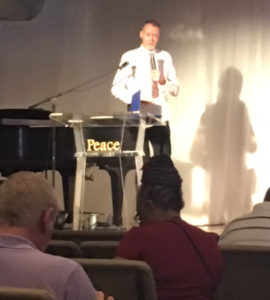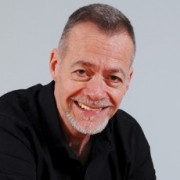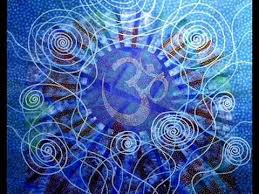Fawcett Chairs SunServe Conference on HIV/AIDS and Seniors
Individuals over the age of 50 represent half of all people living with HIV and they face challenges from both aging and HIV. On Friday, March 31st Dr. Fawcett attended and presented at the 2017 HIV/AIDS Seniors Conference sponsored by SunServe and AIDS United. Serving as conference chair, he assembled a panel of nationally known experts to address issues unique to this population. For example, even if the person is virally repressed, accelerated aging occurs which can lead to cardiological, liver and kidney issues, as well as bone problems. In addition, there are very few resources for psychosocial support of people who are aging with HIV and AIDS.
The conference was open to anyone who self-identified as a senior. While it is easy to assume seniors with HIV are long-term survivors, this is not always the case since seniors represent a significant group of new cases of HIV. The conference consisted of two tracks, one for professionals and one track for the community. Dr. Fawcett opened the conference and participated in panels for care of “body, mind and spirit” as well as a closing panel. That workshop, “The Next Frontier: Building a Collaborative Community of Care” consisted of Fawcett, and other panel members including Mark King, Nelson Vergel, and Bruce Richman. King is an author, HIV/AIDS advocate, long-term survivors of HIV, and two-time GLAAD Media Award nominee for his blog, My Fabulous Disease. King believes his diagnosis is not a tragedy but something to embrace and utilize to make change. Vergel is also a long-term survivor of HIV and the author of two books, Built to Survive and Testosterone: A Man’s Guide. Vergel believes in using testosterone and hormone replacement therapies to prevent AIDS wasting and extending life. Bruce Richman has been living with HIV since 2003 and is the cofounder of Prevention Access Campaign. Richman’s mission is to end the dual epidemics of HIV and HIV-related stigma. Prevention Access Campaign’s message of U=U (Undetectable = Untransmittable) is about getting the word out that people living with HIV on effective treatment cannot transmit HIV, and that there is no shame in being HIV positive.
Over 100 people attended the conference, which was held at the Center for Spiritual Living in Oakland Park, Florida. Conference attendee Dr. Alicia Bosley, staff therapist at SunServe who works with newly diagnosed HIV-positive clients as well as long-term HIV survivors stated, “What a wonderful conference! I was able to connect with professionals in the area and learn new things to apply to my practice with people living with HIV. I was impressed by the insight and clinical knowledge of Dr. Fawcett and the humorous but inspirational anecdotes of Mark King.” The HIV/AIDS and Seniors conference is just the beginning of more conferences like this in the future.








